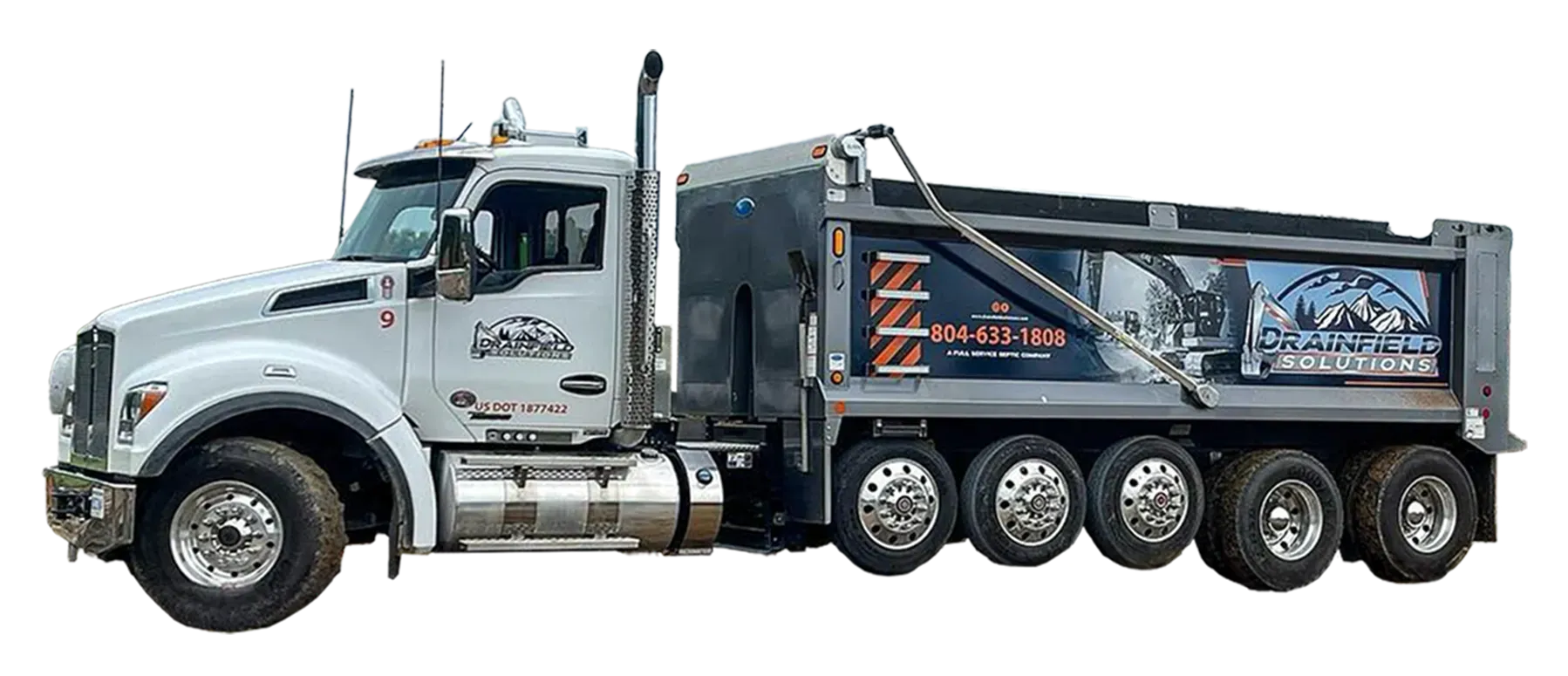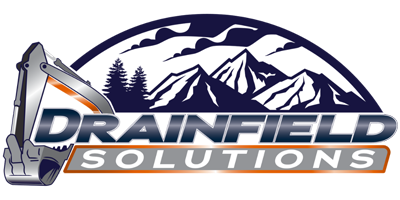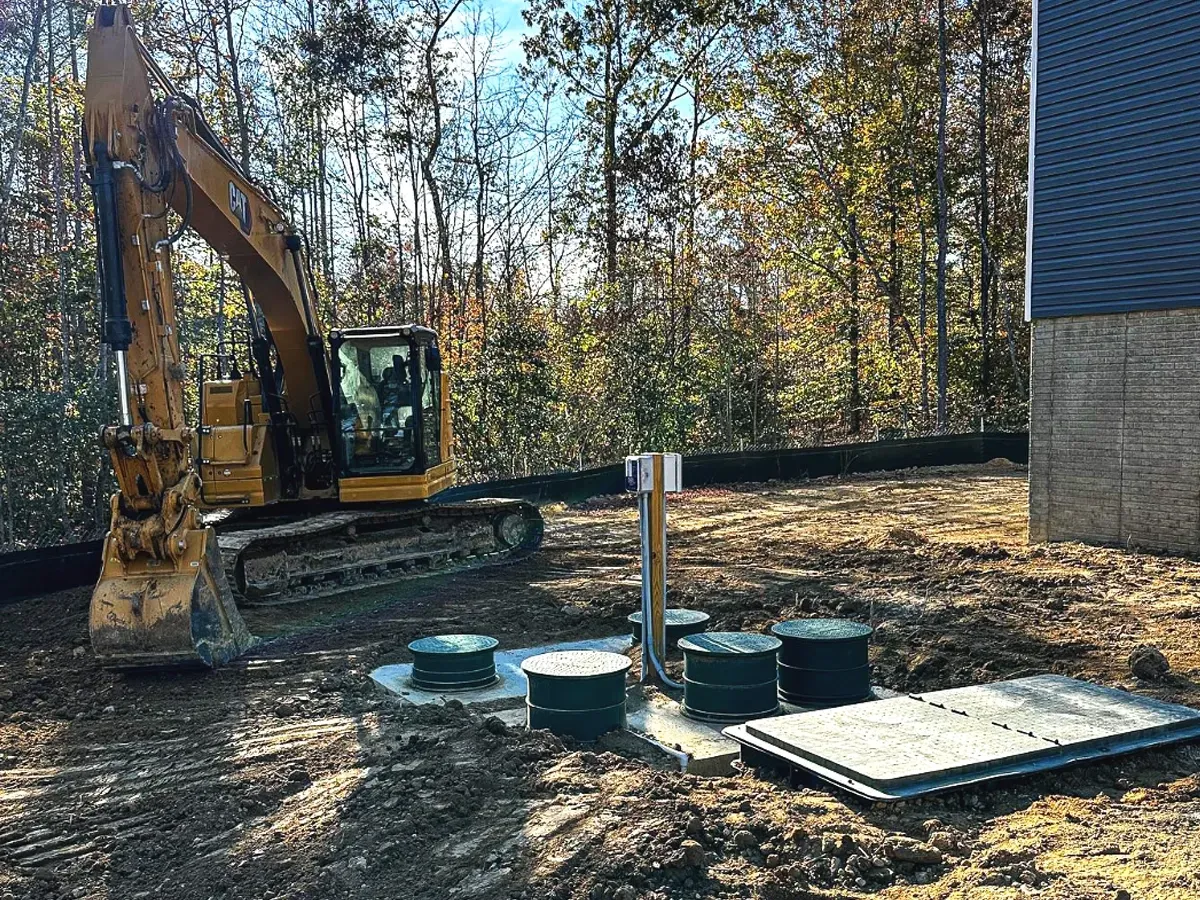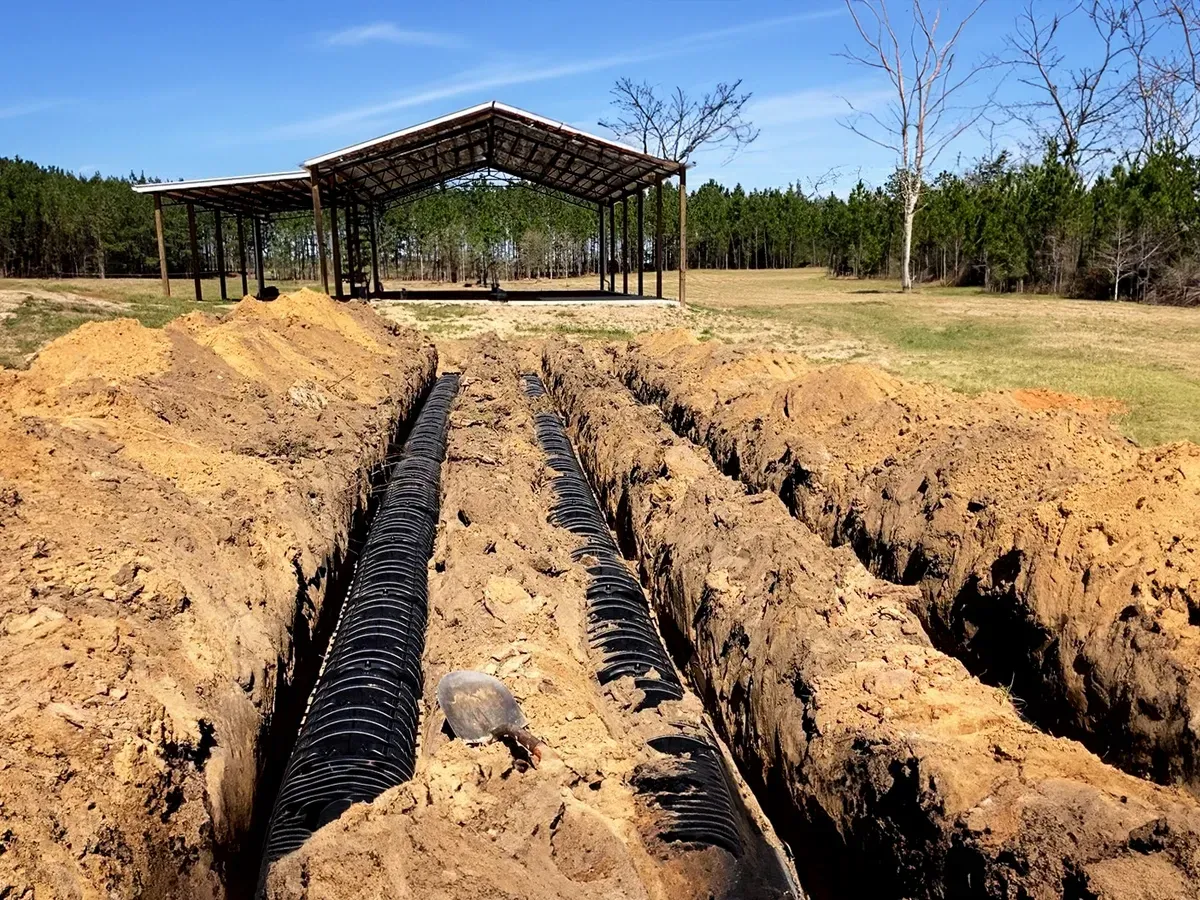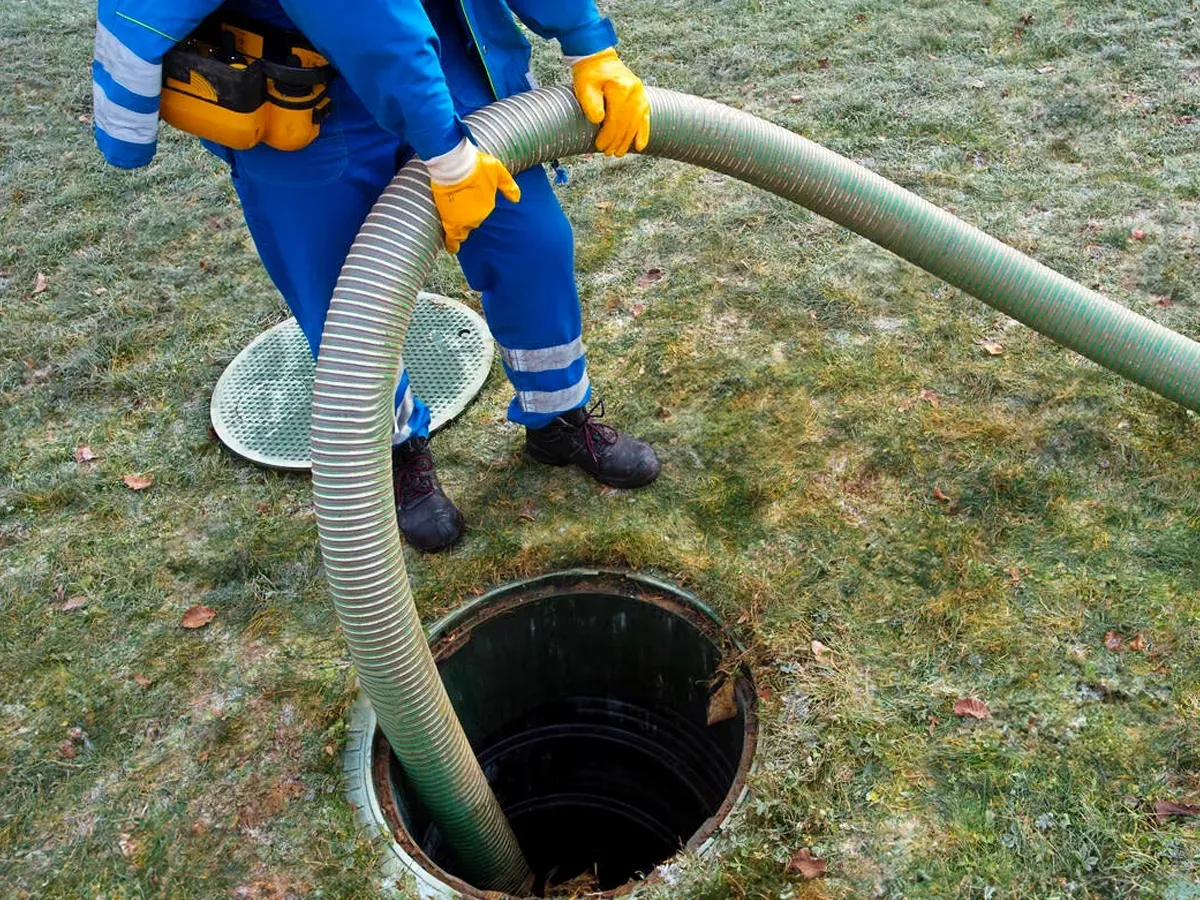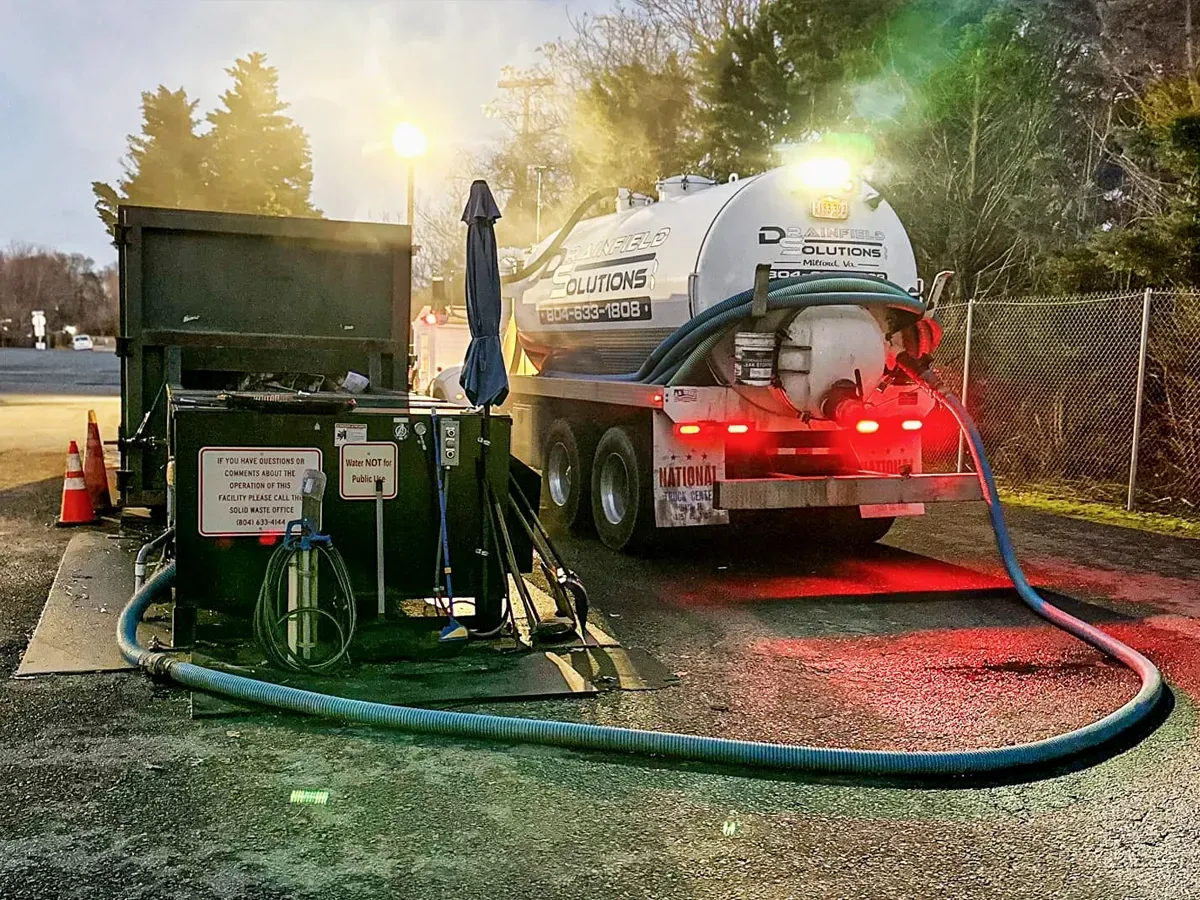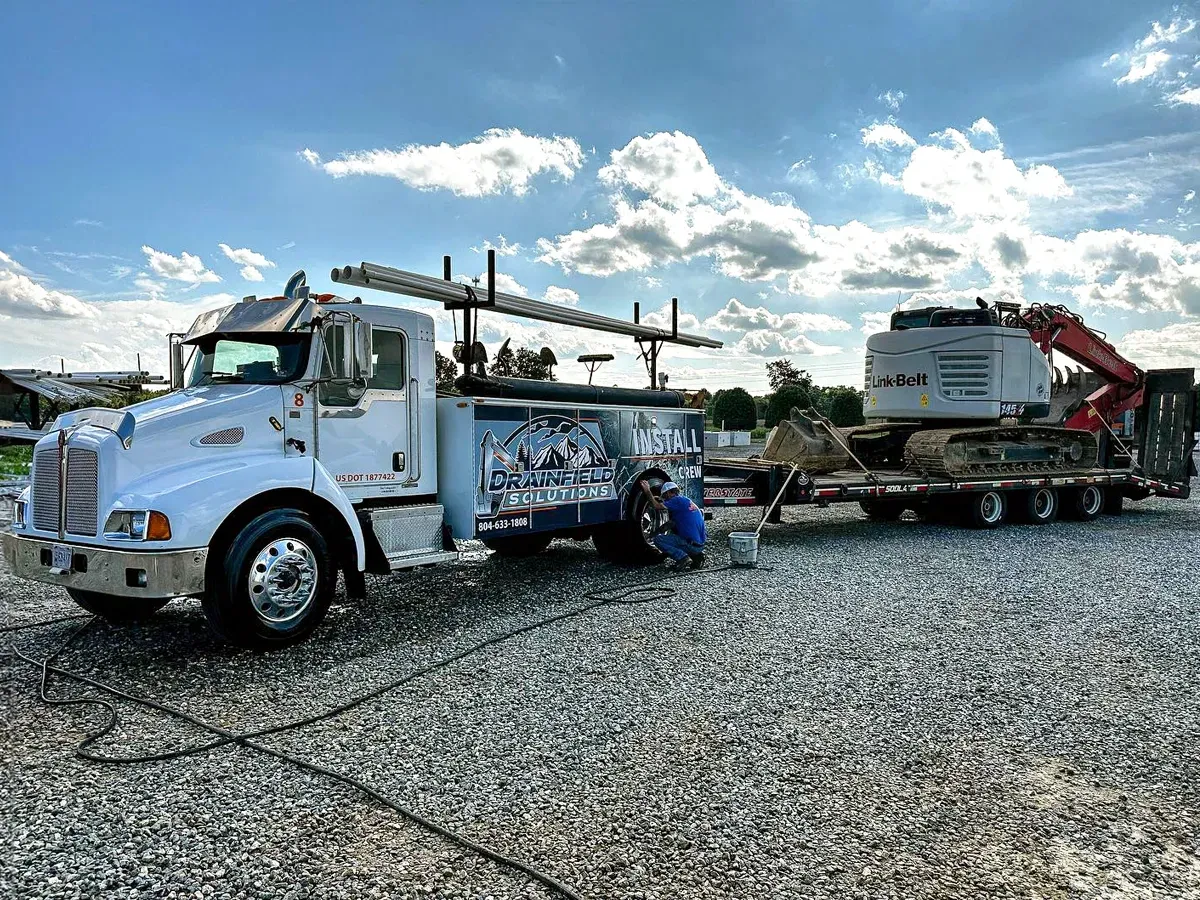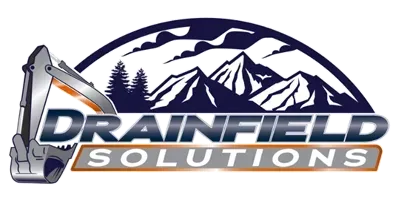Frequently Asked Questions
Do you have a home or commercial septic system and have questions about your drainfield or septic system? Our experts answer the most common septic system questions from across Central Virginia.
What factors are considered in designing a septic system?
We evaluate soil conditions, property size, water usage, local regulations, and the layout of the land to create an effective septic system design.
How long does the septic system design process take?
The septic system design process typically takes 2 to 4 weeks, depending on the complexity of the site and the required permits.
What information do I need to provide for a septic system design?
You’ll need to provide property details, including soil tests, site plans, and any existing plumbing layouts for your septic system design.
Can you design a septic system for a property with challenging terrain?
Yes, our team can help you with septic system design for various terrains, including sloped or rocky areas, ensuring optimal functionality and compliance.
Are your septic system designs compliant with local regulations?
Absolutely. We ensure that all septic system designs meet or exceed local codes and regulations to guarantee a safe and legal installation.
What is involved in the septic tank installation process?
The septic tank installation process includes site assessment, excavation, tank placement, piping installation, and system testing. Our team manages every step to ensure compliance with local regulations and optimal performance.
How do I know if my property needs a new septic tank?
If your current septic system is outdated, frequently failing, or cannot meet your property's needs, a new septic tank may be required. Our experts can inspect your existing septic system and recommend the best course of action.
What factors affect the cost of septic tank installation?
Septic tank installation costs depend on factors such as tank size, soil conditions, property size, and any additional features or requirements. We provide a detailed estimate after assessing your property and needs.
What maintenance is required after installing a new septic tank?
Regular septic maintenance includes periodic septic inspections, septic tank pumping every 3-5 years, and avoiding the disposal of harmful substances. Proper maintenance ensures the longevity and efficiency of your septic system.
How do I choose the right size septic tank for my property?
The size of the septic tank depends on the number of occupants, water usage, and soil conditions. We perform a detailed assessment to determine the appropriate size and design for your specific needs.
What are septic tank risers?
Septic tank risers make it easy to access the septic tank for septic inspection, septic tank pumping, or septic maintenance without digging each time. Traditionally, septic tanks are buried underground, and finding or uncovering the access lid can be time-consuming and costly. A riser eliminates that problem by bringing the septic tank lid to or near the surface.
How do I know if I need drainfield repair or replacement?
Common signs of needing drainfield repair or drainfield replacement include slow drainage, unpleasant odors, wet spots in your yard, and frequent septic backups. Our experts can assess the situation and determine the best course of action.
What causes drainfield failure?
Drainfield failure can occur due to age, poor maintenance, overuse, or clogs from solids and grease. Soil compaction or root intrusion can also impact its functionality.
Do I need drainfield repair, or does my drainfield need to be replaced?
In some cases, minor drainfield repairs can resolve the issue. However, if the septic system is severely damaged or outdated, a full drainfield replacement may be necessary. Our team will evaluate and provide recommendations.
Will drainfield repair or replacement damage my yard?
Our team takes care to minimize disruption to your property during the drainfield repair or replacement process. After the work is completed, we can restore the area to its original condition.
How long does a new drainfield last?
A properly installed and maintained drainfield can last 20-30 years or more, depending on usage, soil quality, and regular care.
What type of drainfield system is right for my property?
We have a whole ebook dedicated to this question! Please check it out here. Contact Drainfield Solutions to discuss the drainfield that would best fit your property and needs.
How often should I have a septic inspection?
It’s generally recommended to have a septic inspection at least once a year. However, the frequency can vary based on usage, septic system size, and local regulations. Regular septic inspections help catch potential issues early.
What does a septic system inspection involve?
A typical septic inspection includes checking the condition of the septic tank, drainfield, and related components. The technician will look for signs of wear, clogs, leaks, and other issues to ensure everything is functioning properly.
How can regular septic maintenance benefit my septic system?
Regular septic maintenance helps prevent unexpected failures and costly septic drainfield repairs by addressing minor issues before they become major problems. It also extends the lifespan of your septic system and ensures efficient operation.
How can I prepare for a septic inspection?
Prepare for your septic inspection by ensuring easy access to your septic tank and septic system components. It’s helpful to provide information about your system’s history and any issues you’ve noticed. Clearing the area around the septic tank can also facilitate a smoother septic inspection.
How do I know if my septic inspection was thorough?
A thorough septic inspection should include checking all septic system components, such as the septic tank, drainfield, and distribution box. The technician should provide a detailed report of their findings, including any recommendations for septic drainfield repairs or maintenance.
What is the difference between maintaining residential and commercial septic systems?
Residential septic systems typically handle lower volumes of wastewater, so septic maintenance focuses on regular septic tank pumping every 3-5 years and mindful household usage to prevent clogs. Commercial septic systems manage much higher and more variable loads, requiring more frequent septic inspections, septic tank pumping, and monitoring of components like grease traps or lift stations. Because of the larger scale and regulatory requirements, commercial septic systems often need professional oversight and documented septic maintenance schedules. Read more in this blog.
How often should I have septic tank pumping performed?
Septic tank pumping should typically be performed every 3 to 5 years, depending on the size of the septic tank and the number of people using the system. Regular septic tank pumping prevents system failure and backups.
What are the signs that my septic tank needs pumping?
Signs that septic tank pumping is required include slow drains, gurgling sounds in your plumbing, foul odors near the septic tank, and standing water around your drainfield.
Is septic tank pumping a messy process?
No, professional septic tank pumping services are designed to be clean and efficient. We use specialized equipment to do septic pump-outs and dispose of waste with minimal disruption to your property.
What should I do if I need emergency septic tank pumping?
If you need emergency septic tank pumping, contact us immediately for same-day service. We’ll prioritize your needs with 24 hour emergency septic services to prevent further issues.
How can I avoid emergency septic tank pumping?
Regular septic maintenance and timely septic tank pumping help prevent emergencies. Avoid flushing non-degradable items. For 24-hour emergency septic tank pumping in Caroline County, Stafford County, Richmond County, and other areas of Central Virginia, count on us to handle any septic problems!
What is the difference between septic tank cleaning and septic tank pumping?
Septic tank pumping refers to the removal of liquid and floating solids (the scum and wastewater layers) from the septic tank using a vacuum truck.
Septic tank cleaning includes a septic pump-out but also involves rinsing, scraping, or washing the tank walls and baffles to remove any remaining buildup.
What is the difference between a spetic pump-out and septic tank pumping?
A septic pump-out means removing all liquid, scum, and sludge from the tank using a vacuum truck. It's primarily about emptying the contents of the septic tank. The goal is to restore space for incoming wastewater.
Septic tank pumping usually refers to the removal of liquid and floating solids (the scum and wastewater layers) from the septic tank using a vacuum truck. Some solids or sludge may remain at the bottom.
How do I find emergency septic tank pumping near me?
If you have a residential or commercial septic system in Central Virginia, Drainfield Solutions is happy to help you. We service septic systems in Caroline County, King George County, Fredericksburg, Richmond, and surrounding areas in Virginia.
What is a real estate septic inspection?
A real estate septic inspection is a thorough evaluation of a property's septic system, including the tank, drainfield, and associated plumbing, to ensure it is functioning properly and meets regulatory standards.
Why do I need a real estate septic inspection when buying or selling a property?
A real estate septic inspection identifies potential issues before closing, protecting buyers from unexpected repairs and helping sellers demonstrate the system's condition to prospective buyers.
What happens during a real estate septic inspection?
During the real estate inspection, our technicians will assess the septic tank's condition, check for leaks, examine the drainfield for proper drainage, and review the overall septic system to ensure it complies with local regulations.
What should I do if the real estate septic inspection uncovers problems?
If issues are found in the real estate septic inspection, our team will provide a detailed report with recommended septic drainfield repairs and solutions. You can use this information to negotiate repairs or adjust the sale price as needed.
How much does a real estate septic inspection cost?
The cost of a real estate septic inspection can vary based on the septic system's complexity and location. Contact us for a detailed quote tailored to your property's septic system.
What qualifies as septic emergencies?
Septic emergencies include situations like sewage backups, leaks, or complete septic system failure that require immediate attention to prevent further damage or health risks.
What should I do if I need emergency septic services?
First, avoid using water in your home or business to prevent further backups. Then, contact us immediately for assistance.
Are your 24 hour emergency septic service available every day of the week?
Yes, our 24 hour emergency septic services are available around the clock to ensure that you receive the help you need when you need it.
Will I need to evacuate my home during septic emergencies?
In some cases, it may be necessary to evacuate, especially if there’s a risk of sewage exposure. Our team will provide guidance based on the specific situation.
What can I do to prevent septic emergencies?
You can prevent septic emergencies by getting regular septic maintenance, being mindful of water usage, and avoiding flushing non-biodegradable items.
Why is my red septic light on?
A red septic alarm light means your septic system has detected a problem, most often related to high water levels or a pump issue in the system.
What To Do:
-Don’t panic — the system has backup space and time before it overflows.
-Limit water use immediately (no laundry, long showers, or running dishwashers).
-Check the breaker or power source for the septic pump — sometimes it’s as simple as a tripped breaker.
-If the light has an audible alarm, you can silence it, but don’t ignore the warning.
-Call a septic service professional like Drainfield Solutions — they can inspect the pump, floats, and electrical connections to find and fix the issue.
Ready to Take the Next Step?
Whether you're in need of a septic inspection or regular septic maintenance, Drainfield Solutions is here to help. Get in touch today for reliable septic services you can trust.
